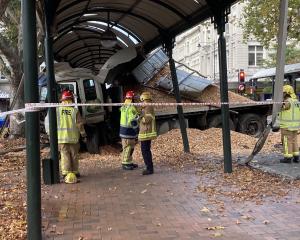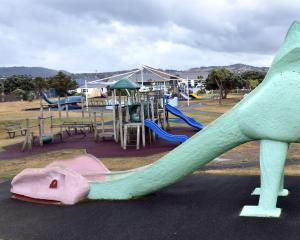The theatre's existing orchestra pit is being dug up this week as it is to be lowered about 1m as part of the theatre's upgrade.
Overseeing the orchestra pit work this week has been Dunedin archaeologist Angela Middleton.
The theatre was completed in 1928, on the site of the Ross's Building, a four-storeyed building that housed shops and living quarters.
That building burned down in 1879 with the loss of 12 lives, including the then editor of the Otago Witness, Robert Wilson, his wife and four of their six children.
Another building, also called Ross's Building, replaced the original, before the Regent was developed, but it appeared at least the floor of what was now the theatre's orchestra pit was built directly on top of fill compromised of the remnants of the original Ross's Building, Dr Middleton said.
Directly under the concrete floor was a 20cm-thick layer of broken glass of various colours, under which is a thick layer of charcoal-laden soil full of old bricks.
And among all of that were small pieces of history, Dr Middleton believed could only have come from buildings that occupied the site years earlier.
Since excavation began on Monday, she and archaeologist Hamish Williams had unearthed several items - from pieces of old bottles, to segments of milk jugs, teacups, a Nevis clay pipe, a whole plate and saucer and many oyster shells, which deteriorate very slowly.
The pieces were all part of a big jigsaw, Dr Middleton said.
"They tell us about the way the site developed, and how the buildings on it were managed after various fires."
She said the items, which may have been buried for more than 130 years, were not valuable as museum pieces, but were valuable for their immediacy and that they were personal domestic items that evoked individuals and everyday lives.
"I mean, we've got a teacup here that might be the cup that Mrs Wilson had her tea out of the night before the fire."
There was also evidence of the earlier Ross's Buildings underneath the theatre, where it appeared some foundation structures for the theatre had used basalt rock foundations constructed for the older buildings.
It was important to record everything they had noted, as part of the history of the site and of the Octagon, she said.












